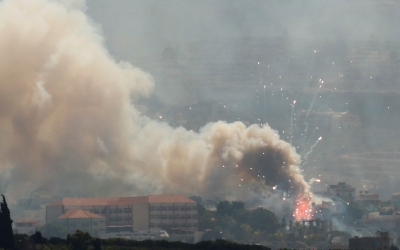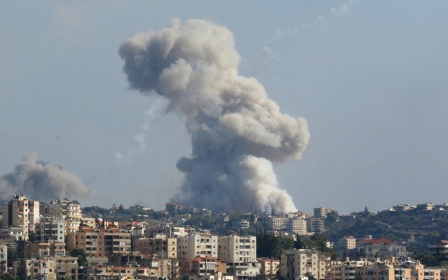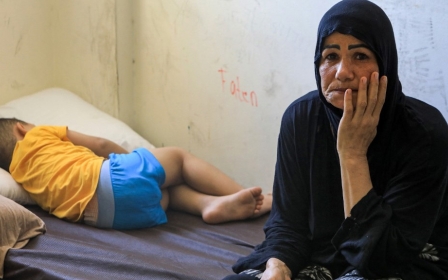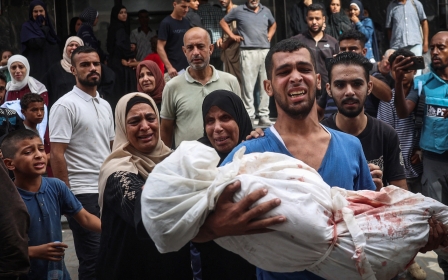Israel's war on Lebanon: Lethal tactics, no endgame

"We need to change the security situation. We need to be fully prepared for [ground] manoeuvres and action,” Major General Uri Gordon, the Israeli army’s northern front commander, recently told troops as he ordered them to prepare for a “new phase” of conflict in Lebanon.
The campaign so far has been an interconnected series of multi-domain attacks, with the aim of degrading Hezbollah’s resources as Israeli brigades remain engaged in two other offensives in Gaza and the occupied West Bank.
Over the last 10 days, Israel believes it has inflicted significant damage on its strongest regional enemy: Hezbollah.
On 17 and 18 September, thousands of handheld pagers and hundreds of walkie-talkies exploded almost simultaneously across Lebanon and Syria, killing dozens and injuring thousands. Two days later, an Israeli air strike killed at least 45 people, including two top Hezbollah commanders, Ibrahim Aqil and Ahmed Wahbi.
Then, on Monday, a barrage of air strikes targeted 1,600 alleged Hezbollah positions, in an Israeli operation dubbed “Arrows of the North”.
New MEE newsletter: Jerusalem Dispatch
Sign up to get the latest insights and analysis on Israel-Palestine, alongside Turkey Unpacked and other MEE newsletters
The air strikes, which aimed to destroy Hezbollah missile, rocket and artillery depots, killed more than 550 people, including women and children, and injured more than 1,800 others. The Israeli operation in Lebanon is still ongoing.
Is this the beginning of a full-scale war, as I predicted earlier this year, even as the notion has been downplayed or dismissed elsewhere? If so, how is Israel likely to fight in the coming weeks and months?
Tactical success
As opposed to the mechanised and armoured thrusts used in Gaza’s urban terrain over the past year, Israel has thus far fought remotely and stealthily in Lebanon, aiming to reduce casualties and address its manpower shortages.
The operation that resulted in the pager explosions likely took years of preparation. I believe this was not just an infiltration of a supposedly secure supply chain; rather, it more likely involved manufacturing the “secure” communications devices chosen by Hezbollah’s security apparatus, and then successfully delivering them to its units.
Follow Middle East Eye's live coverage of the Israel-Palestine war
Manufacturing improvised explosive devices (IEDs) on an industrial scale isn’t a new concept. The Islamic State group, a non-state force, mastered it.
The manufacturing scenario is more likely because booby-trapping (and transporting) 5,000 communications devices with conventional, nitrate-based explosives would be a logistical nightmare, detectable in seaports and airports, and it would involve at least a quarter tonne of explosives.
In any case, the attack was a tactical success for the Israeli military and security agencies. It might have temporarily neutralised as many as 1,500 Hezbollah members. It terrorised civilians, in accordance with the Dahiya doctrine. It might have restored the omnipotent and deterring image of Israeli intelligence agencies after the failures of 7 October.
Like the 'endgame' in Gaza and perhaps in the occupied West Bank, an achievable strategy in southern Lebanon remains unclear or non-existent
The operation was also a massive upgrade in remote IED warfare, which is commonly used by terrorist groups. It was camouflaged, concealed, lethal and indiscriminate. Such booby-trapping tactics are banned by the UK and other Nato militaries.
Then, on Monday, Israel hit Lebanon with an estimated 500 air strikes, comprising more than 1,000 air sorties. To put the scale and intensity of this campaign into perspective, the Israeli Air Force attained air supremacy over Egypt’s skies on 5 June 1967 with fewer sorties.
The Israeli army claims the strikes targeted command, control and communications structures, aiming to reduce the movement’s capacity and sew chaos in its ranks.
Indeed, over the past 10 days, Israel has worked to destroy the four pillars of what I call Hezbollah’s “rocket revolution”: precision (guided missiles and guidance kits); communications (essential between rocket artillery and drone units); surveillance/sensors (short- and mid-range drones that can “see” over Israel); and range (including the guided Fatih-110 missile and unguided Zelzal 2 rocket).
Shaping operation
These attacks either constitute a shaping operation for a ground invasion, or an on-steroids version of “mowing the lawn”, a phrase Israel uses to describe periodic large-scale military operations that cause extensive damage to infrastructure and civilian areas.
Since the summer, Israel has deployed a significant grouping of forces in its north, including brigades from the 36th regular division of the Northern Command, the elite 98th paratroopers division and the 146th reserve armoured division, among others. It also recently called up two additional reserve brigades.
The current combat grouping mobilised in the north thus exceeds the size of four divisions, with roughly 16 brigades. Taking into account that Israeli brigades are relatively small due to manpower shortages - with some brigades having fewer than 2,000 soldiers - this grouping remains almost three times the size of Israel’s invading force in Lebanon in July 2006.
With multi-domain attacks ranging from remote, old-school booby-trapping, to intelligence infiltrations, to sophisticated decapitation air strikes, this is likely a shaping operation for a ground invasion, with the aim of further degrading Hezbollah.
The further mobilisation of ground forces seems to indicate that the phase of armoured thrusts and mechanised manoeuvres is a matter of when, not if. But in battle-analysis courses, the students’ first lesson is that the enemy always has a vote. Hence, the big question remains: does Hezbollah have enough capabilities to strike with quality and sustain with the necessary quantities, or has Israel successfully degraded its capabilities?
Regional actors also matter. Iran’s veto over a full-scale war has been highlighted as a reason for Hezbollah’s relatively limited response. This alleged veto is difficult to verify. But based on two decades of studying non-state forces, it is clear to me that - far from the popular perception - many have agency and operate autonomously when they must.
As for Israel, this remains an operational plan. Like the “endgame” in Gaza and perhaps in the occupied West Bank, an achievable strategy in southern Lebanon remains unclear or non-existent. “Strategy without tactics is the slowest route to victory. Tactics without strategy is the noise before defeat,” Sun Tzu was once paraphrased, based on the chapter "attack by Stratagem" in his book Art of War.
His statement applies to Israel’s current way of warfare: lethal tactics, attritional operations, no strategy.
The views expressed in this article belong to the author and do not necessarily reflect the editorial policy of Middle East Eye.
Middle East Eye delivers independent and unrivalled coverage and analysis of the Middle East, North Africa and beyond. To learn more about republishing this content and the associated fees, please fill out this form. More about MEE can be found here.






